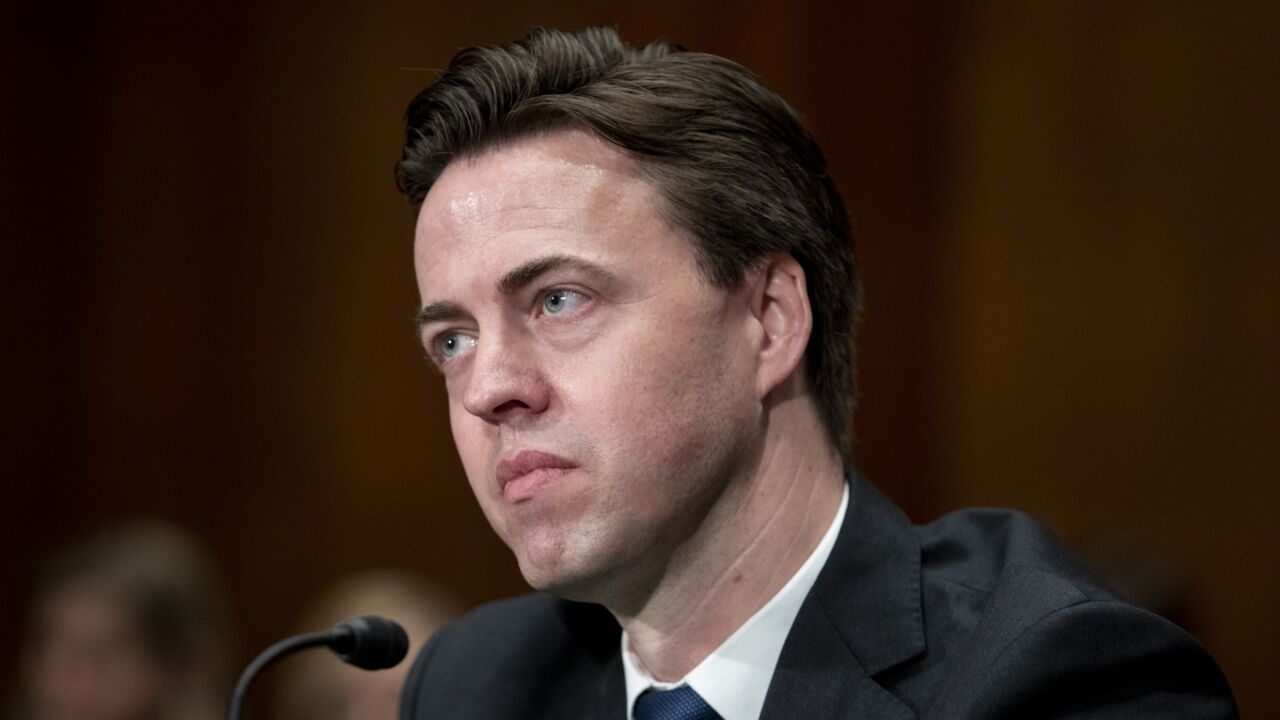Washington Mutual’s new ad campaign suggests the bank is so outstanding people want to cheer — or shout: “Whoo hoo!”
The creative is at times clever, distinctive and consistent with the bank’s customer-friendly brand. But the ads also lack the edgy, anti-establishment humor of earlier efforts. And given current realities — the bank’s stock has slipped 80 percent from its high and consumers are feeling decidedly hard pressed — the ads’ whimsy seems a bit misplaced.
The campaign launched in February and will run through the fall holiday season. Integrated across TV, in-store, direct, print, out-of-home, radio and online avenues, the campaign also is using a parallel internal campaign conveying what bank marketers call “an emotional appeal” to consumers.
“Other banks are positioning themselves as offering banking in a grandfatherly way. Our idea is that WaMu simplifies banking and creates more smiles,” says Rob Schwartz, executive creative director for TDWA/Chiat/Day, the agency that heads the campaign, replacing Leo Burnett. The campaign has a Spanish component led by Zubi Advertising; Chinese spots are headed by IW; an online component is led by Avenue A-Razorfish.
For the TV component, the focal point is the customer’s Whoo hoo! Moment—best described as a dream-like state where customers visualize moments of elation in response to learning about the bank’s products and services. That feeling prompts the consumer to exclaim: “Whoo hoo!”
“The campaign creates an emotional resonance around its brand, which is a smart thing,” says Nathan Hunt, svp and group creative director for the advertising agency Deutsch in New York. “Washington Mutual’s always had a more positive association with its brand. They are supposed to be a different kind of bank.”
In one TV spot, a balding businessman daydreams he’s on the Pacific Coast Highway with “Fabio-like” hair growing out of his head. In another, a woman fantasizes about opening her own bakery. Another TV spot features a customer at a branch daydreaming about simplified bank products. In each case, WaMu’s ability to enable customers to access banking services without hassles or hidden costs comes in an eureka-like moment. “It’s a moment of elation. It’s the Whoo Hoo! moment,” says bank CMO Genevieve Smith.
Matt Garthoff, an associate creative director at Ignited, a Los Angeles-based ad agency, says some of the daydream-oriented TV spots lack “realism.” In comparison, Garthoff mentions Citigroup’s recent “charged if I do, charged if I don’t” ads as conveying the message more realistically. “Citi’s saying there’s no such thing as unconventional wealth. It’s taking the angle that it’s not all about money, even though the bank is a money company. Compared to that, the WaMu campaign feels over the top.”
WaMu’s display and print spots are more direct, with one exclaiming: “Finally, a bank that doesn’t nickel and dime you. Finally, a bank that gives you something back. A bank that has your back. Finally, a bank that makes you want to say, “Whoo hoo!” It’s that use of simple messages with sharp colors that should connect well with consumers. “If I get the sense that the bank ‘has my back,’ I’m going to feel good about that bank,” says Karolyn Cannata-Winge, an advertising professor at the University of New Mexico.
The ads lack the subversive nature of older ads, which featured a gaggle of crotchety, old and wealthy bankers expressing over-the-top outrage because a younger man — an actor playing a WaMu employee — touts WaMu’s offer of free checking and other fee-less services. “The older ads talked about what WaMu wasn’t,” Schwartz says, explaining the superiority of the new campaign. “These new ads are saying that WaMu is not just different. It’s also better.”
The campaign’s often light-hearted style stands in stark contrast to economic realities. Promising an optimistic future in tough economic times is quite a challenge when the people currently shouting “Whoo hoo!” the loudest may be traders shorting the bank’s stock. WaMu, which spent most of April working on securing a multibillion-dollar cash infusion to offset losses from the mortgage crisis, has seen its stock fall from more than $40 per share to around $10 per share during the past 52 weeks—and it posted a $1.14 billion first-quarter loss. Reuters recently reported that 23 percent of the bank’s 195.4 million outstanding shares were held short by traders. So much for confidence in the bank’s future.





